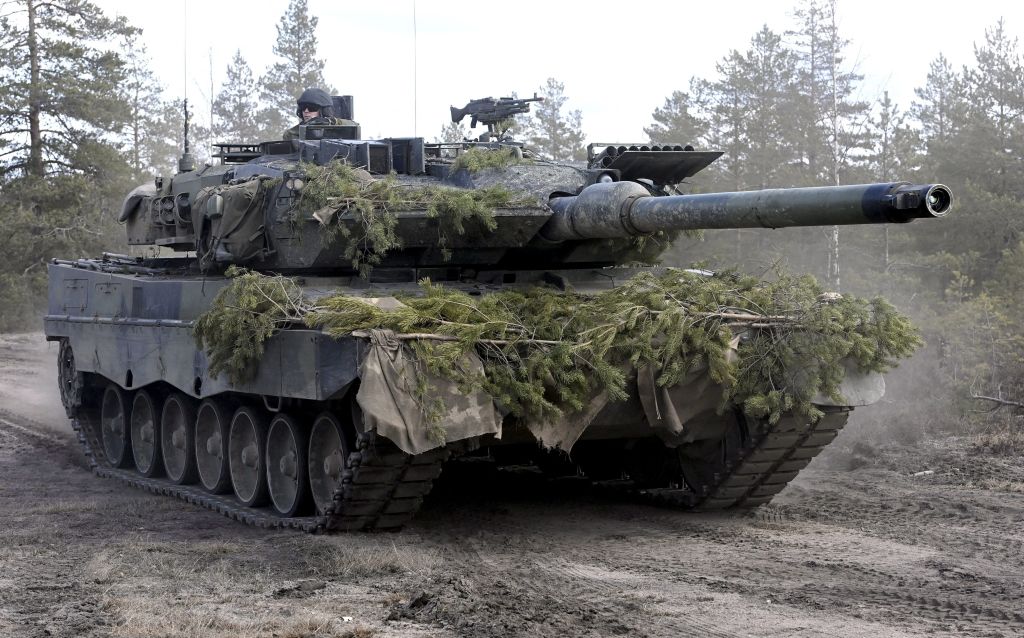Finland became the 31st member of NATO today, in a swift journey that began in response to Russia’s Ukraine invasion.
“This is really an historic day. It’s a great day for the alliance,” NATO chief Jens Stoltenberg said on Tuesday.
“What we see is that President Putin went to war against Ukraine with a declared aim to get less NATO,” Stoltenberg told reporters in Brussels on Monday. “He’s getting the exact opposite.”
Following the announcement, Russia claimed it would bolster its defenses near the border.
The decision comes as Sanna Marin—Finland’s left-leaning Prime Minister who pushed for Finland’s ascension into the world’s biggest military alliance following decades of public opposition—lost re-election over the weekend.
More from TIME
“This will remain her lasting legacy that she pulled off something like this. It’s a historical U-turn that even two years ago would have been unthinkable,” says Erwan Lagadec, an associate research professor of international relations at George Washington University.
Read More: Finland Prime Minister Sanna Marin Ousted, Conservatives Win Tight Vote
What was Finland’s journey to join NATO like?
For decades, Finland and Sweden remained neutral when it came to wartime alliances. A former member of the Russian empire—which dissolved in 1917—Finland was under the thumb of the Soviet Union during the Cold War under a deal known as “Finlandization.” In return for neutrality, the country was allowed to develop its own domestic policy and economic systems, as long as they did not go against the Soviet Union. “The USSR had a gun to Finland’s head,” says Lagadec.
This policy scarred Finnish public opinion for decades, adds Lagadec, making many opposed to military alliances.
Everything changed when Russia invaded Ukraine in late February 2022. “It became very clear very quickly that this was not going to be the quick three-day Kyiv decapitation strike that many people thought it was going to be,” says Rachel Rizzo, senior fellow at the Atlantic Council’s Europe Center. “Europe was now going to fundamentally rethink its relationship with Russia.”
That included Finland, a country that shares an 810-mile border with Russia. “If Putin’s goal is neo-imperialism, there’s no reason why Finland shouldn’t be next,” says Lagadec. Public support for Finland joining NATO jumped from one third of Finns in 2018 to almost 80% in 2022, according to a poll by Finnish broadcaster YLE.
Last May, Finland and Sweden applied to join NATO on the same day, hoping to be accepted together. The move was met with resistance from Turkey’s President Recep Tayyip Erdogan, but, after Finnish President Sauli Niinisto met with Erdogan last month, Finland was able to move forward with its bid without Sweden.
What are the geopolitical consequences of Finland joining NATO?
Finland’s acceptance is a win for both sides, says the Atlantic Council’s Rizzo. “Finland gets the benefits of being a member of NATO, and NATO also gets the benefits of the Finnish military.”

Finland has long been one of the closest non-ally partners for NATO, says Rizzo. But the threat of invasion meant that was no longer enough. “What became clear was that to ensure territorial integrity… they needed to join NATO, because NATO deterrence works.”
Now, the country will be protected by Article Five, the alliance’s mutual defense clause that ensures member countries mutual protection.
The move also has strategic implications for the war against Russia as NATO countries continue their support of Ukraine. “The border between NATO and Russia has basically been doubled in size and length,” says Lagadec, adding that once Sweden joins, the Baltic Sea will become “a NATO lake” that will help the alliance arm the Baltic region.
Finland already devotes 2% of its GDP to military expenditures, which all NATO countries commit to do, but many haven’t in practice. And the country’s conscription-based reserves total 900,000, according to The Wilson Center.
“They have trained and built a large army over many years and maintain that high level of readiness. Finland is also a country with extremely high level of resilience, of preparedness throughout the whole society,” Stoltenberg said following the announcement on Monday.
Read More: Inside Ukraine’s Push to Try Putin for War Crimes
How does this affect other countries’ bids to join NATO?
NATO aims to accept Sweden by its July summit in Lithuania, says Lagadec, but whether that happens is largely dependent on Erdogan, who has blocked Sweden’s bid until the country cracks down on Kurdish groups operating in the country and cracks down on anti-Islam Koran burning. Rizzo says Erdogan is likely to continue stalling as he faces elections in May. “There really is an ability for Erdogan to use this as a political tool to help bolster his position at home and to be seen as a strong leader,” says Rizzo.
For other countries in limbo, Finland’s acceptance will not change much. Georgia and Ukraine are also angling to join the alliance but face high barriers for entry. Members must unanimously agree to add new members, which can get complex as politics come into play, as seen with Turkey’s Sweden opposition.
“When you add a country, you are both adding a vote and potentially adding a veto. As the alliance grows it will become even more important to ensure consensus among member nations,” says Rizzo. “[The alliance needs] to focus on ensuring that any bilateral issues between states don’t roadblock NATO-wide decision making.”
More Must-Reads from TIME
- Donald Trump Is TIME's 2024 Person of the Year
- Why We Chose Trump as Person of the Year
- Is Intermittent Fasting Good or Bad for You?
- The 100 Must-Read Books of 2024
- The 20 Best Christmas TV Episodes
- Column: If Optimism Feels Ridiculous Now, Try Hope
- The Future of Climate Action Is Trade Policy
- Merle Bombardieri Is Helping People Make the Baby Decision
Write to Simmone Shah at simmone.shah@time.com